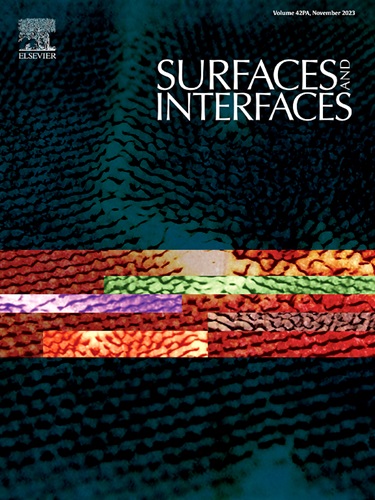Thermal effects on precursor-based garnet Li-La-Zr-O coatings for high-voltage Ni-rich cathodes
IF 5.7
2区 材料科学
Q2 CHEMISTRY, PHYSICAL
引用次数: 0
Abstract
High-voltage (>4.3 V vs. Li/Li⁺) Ni-rich cathodes, essential for high-energy-density lithium-ion batteries, suffer from electrolyte-induced surface degradation. Garnet-type Li-La-Zr-O coatings are promising, but their high crystallization temperature can trigger detrimental interfacial reactions. Amorphous coatings offer a potential solution, but require optimized synthesis and thermal treatment. This study investigates precursor-derived Li-La-Zr-Al-O (LLZAO) coatings on Li(Ni0.5Co0.2Mn0.3)O2 (NCM523) cathodes annealed at 300 °C, 500 °C, and 750 °C, correlating precursor thermal behavior with surface microstructural and interfacial chemical changes. To quantitatively analyze thermally induced changes at the cathode-coating interface, particularly the overlapping Ni 2p and La 3d core-level spectra in X-ray photoelectron spectroscopy (XPS), we developed a spectral deconvolution approach. Combined with X-ray fluorescence (XRF), this reveals how annealing affects coating homogeneity. A 500 °C anneal yields a sub-crystalline LLZAO coating with optimal homogeneity and minimal Ni/La migration, significantly enhancing cycling stability and rate capability at 4.55 V vs. Li/Li⁺. Coatings annealed at 300 °C remained amorphous with carbon residues, offering limited protection, while those at 750 °C exhibited secondary phase formation and interfacial degradation. This work highlights the critical role of thermal control in optimizing amorphous LLZAO coatings and provides a quantitative methodology for understanding and mitigating interfacial reactions in high-voltage lithium-ion batteries.

求助全文
约1分钟内获得全文
求助全文
来源期刊

Surfaces and Interfaces
Chemistry-General Chemistry
CiteScore
8.50
自引率
6.50%
发文量
753
审稿时长
35 days
期刊介绍:
The aim of the journal is to provide a respectful outlet for ''sound science'' papers in all research areas on surfaces and interfaces. We define sound science papers as papers that describe new and well-executed research, but that do not necessarily provide brand new insights or are merely a description of research results.
Surfaces and Interfaces publishes research papers in all fields of surface science which may not always find the right home on first submission to our Elsevier sister journals (Applied Surface, Surface and Coatings Technology, Thin Solid Films)
 求助内容:
求助内容: 应助结果提醒方式:
应助结果提醒方式:


